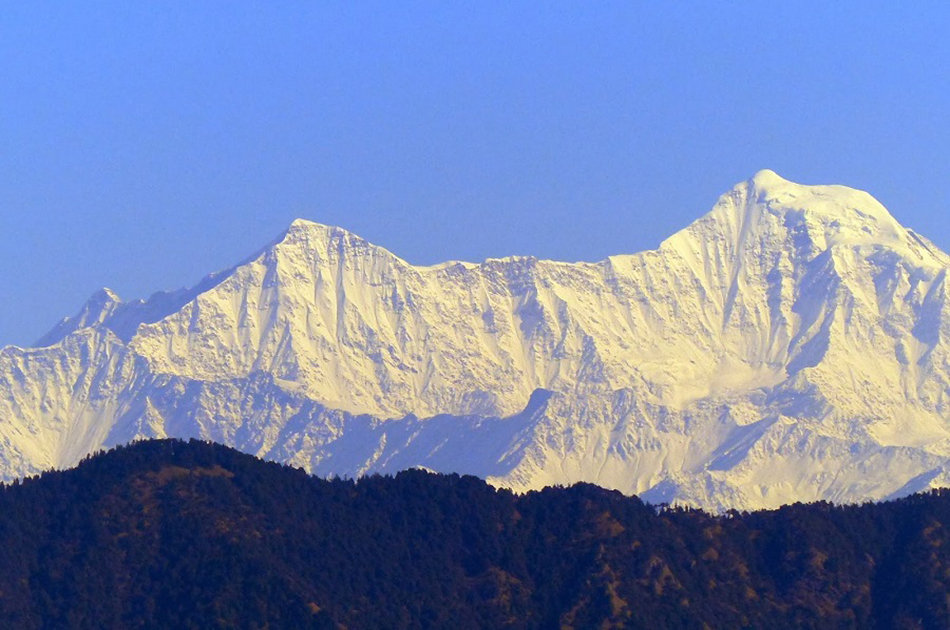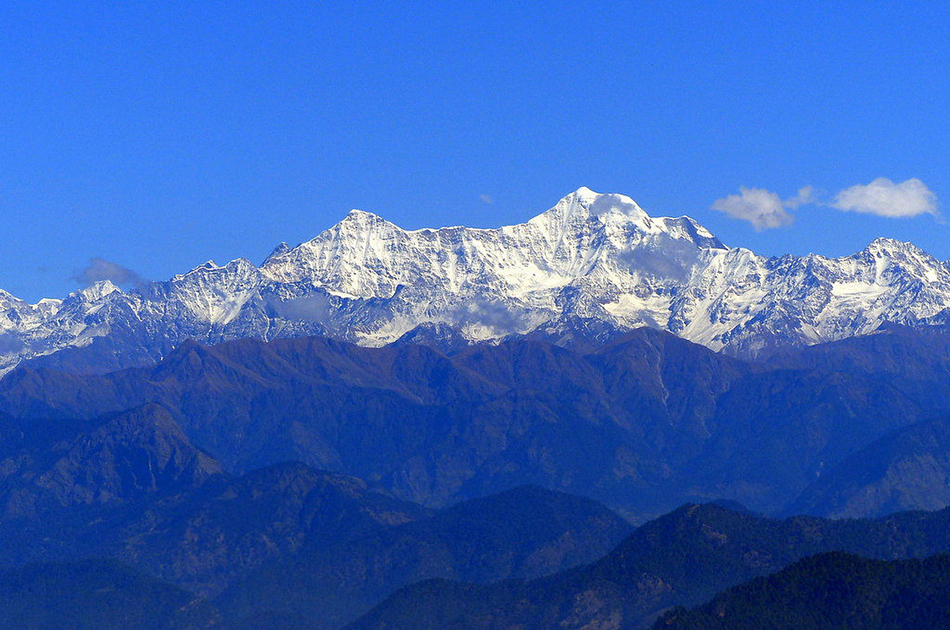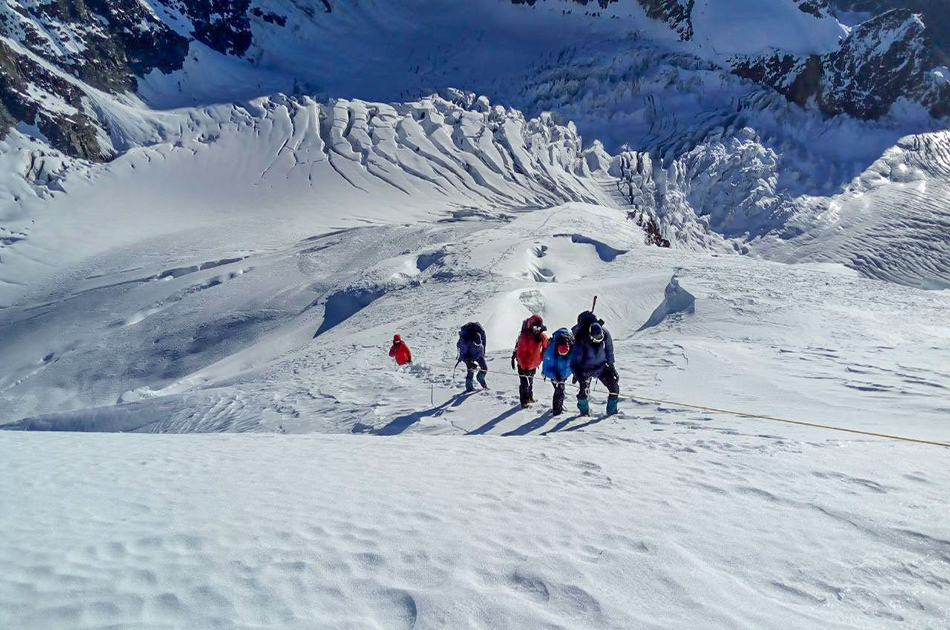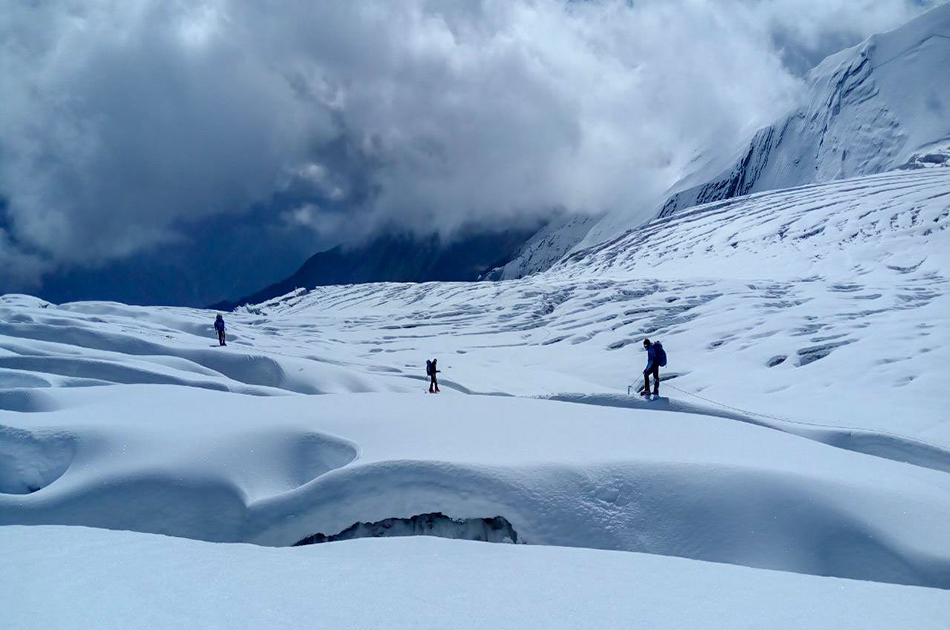About
Bandarpunch (Bandarpoonch), which means “Monkey’s Tail” or “Hanuman’s Tail” in Hindi,
is a beautiful massif in Uttarakhand’s Western Garhwal Himalayas. Bandarpunch I
(6316 M), Bandarpunch 2 (6102 M), and Kalanag are the three peaks that make up the
massif (Black Peak – 6387 M). The Bandarpunch 1 peak is suitable for those planning
for expeditions to peaks of 7000 metres or higher. To avoid being too academic, the
Bandarpoonch peak expedition should only be attempted by those who have prior
trekking experience and a detailed understanding of mountaineering techniques, as
well as the use of technical equipment such as rope-up procedures, jumar, and
crampons.
The expedition faces a variety of difficulties, including a crevasse-infested path
to the summit and unpredictably bad weather. Acclimatization to the peak’s high
altitudes is important. The summit provides spectacular views of nearby peaks such
as Kalanag, Swargarohini, Satopanth, Sudarshan Parvat, Jogin, Gangotri range, and
others. The path leads you across the Bandarpunch Glacier, the Yamuna River’s
source. The south-eastern route to the summit is the most popular, and we’ll take
it. The Bandarpoonch Peak expedition is for those who want to test their limits and
conquer one of the Garhwal Himalayas’ most beautiful peaks.
Itinerary
Things to Carry
• Footwear: The trekking boots which must be waterproof and snow proof, normal boots,
floaters, and woolen socks.
• Backpack: (50 ltr), Daypack (20-30 ltr), Duffel bag.
• Clothes: Jacket and trousers that are both waterproof and breathable. Jacket
(synthetic or down feather fleece), synthetic insulated trousers, poncho,
sweatshirt, inner thermal (upper & lower), fleece, t-shirts, cotton trekking pants,
shorts.
• Season wise Clothes:
• Hand and head protection includes liner gloves, bandannas, sun hats, woollen caps,
and face masks, among other things.
• Accessories: Sunglasses/goggles, anti-glare lenses, water bottle, hydra bag, and
headlamp with spare bulb and extra batteries are all recommended.
• Trekking Gears: Toolkit for an emergency. Sunscreen, a toiletry pack, water
purification pills, Ziploc packs, ear plugs, first-aid kit, and the necessary
medications are all recommended.
• Camping Equipment: Sleeping bags of lining (extreme -5 to +5 Celsius if you have
one), trekking sticks, and so on.
• Warm top/light micro fleece pullover/full sleeve T shirt – 2/3.
• Water resistant/repellent trekking pants with an inner lining for added warmth- 2
High-quality windproof/water-resistant outer shell (jacket) with a proper hood.
• Thick Fleece / Full-sleeve Woollen Jumper, Down Jacket with at least 600 fill
capacity Innerwear with a thermal component (upper and lower).
• Woolen hat, inner fleece gloves, and outer water-resistant gloves.
• 4–5 pairs of thick woollen socks and standard socks, scarf/muffler (optional)
• Waterproof Trekking/Hiking shoes with a thick heel and high ankles that are
comfortable to wear. Sneakers/sport shoes are ideal for camp.
• Poncho or raincoat. A small, light-weight towel.
• A hydration pack and an insulated water bottle (optional)
• Sunglasses with UV cover and the potential to cut light, as well as a cap or
floppy hat to shield the strong sun off your skin (important when traversing through
snow)
• Trekking pole or sturdy walking stick Lip Balm, Sunscreen Lotion
• Flashlight / torch (with extra batteries) Medications, if any special prescription
is needed Toiletries for personal use
• Carry a rain cover over your luggage • Day pack/small bag that you can carry on
your back all day to keep your essentials in
• Keep a few poly bags or plastic containers in your bag to place your things in if
you need to in case of heavy weather.
Personal Medical Kit (MANDATORY FOR ALL)
• 10 Diamox tablets (to prevent AMS)
• Nifedipine – 5 pills Dexamethasone – one strip
• 6 tablets of Crocin (fever)
• 4 tablets of avomine (motion sickness) 4 capsules of Avil 25mg (allergies)
• 4 tablets of Combiflam (Pain killer)
• 6 tablets each of Norflox TZ and Lomofen (diarrhea) 10 tablets of Digene (acidity)
• 10 Omez/Rantadine capsules (antacids) 3 to 5 metres of crepe bandage
• Keep a few poly bags or plastic containers in your bag to place your things in if
you need to in case of heavy weather.
• 1 tiny roll of gauze 10 strips of bandage 1 small roll of cotton 10 packets of ORS
• Moov spray Betadine or other antiseptic cream (aches, & sprains)
• If you're vulnerable to knee injuries, you should wear a knee cap. Powder with antifungal properties
What we'll give/What we won't:
Cost includes:
• Pick and Drop Service from mentioned location
• Fees for the guide and the chef
• Camping facilities' rent
• Entrance fees to the forest
• To transport camping gear, a porter and mule are required. Please keep in mind
that personal baggage can be borne by mules and/or porters for a fee
• From the first day's dinner until the last day's brunch, both of the meals are
vegetarian
• Throughout the walk, you'll be staying in a tent or if possible, then in a guest
house
Cost Excludes:
• No pickup and drop point from/for your hometown
• Personal costs include things like tips, personal medications, and conference
calls, etc
• Apart from what is mentioned above, some transportation assistance during the
trek
• Porters/mules can carry personal luggage weighing up to 12 kg per bag per person
for Rs 350 per day per bag







